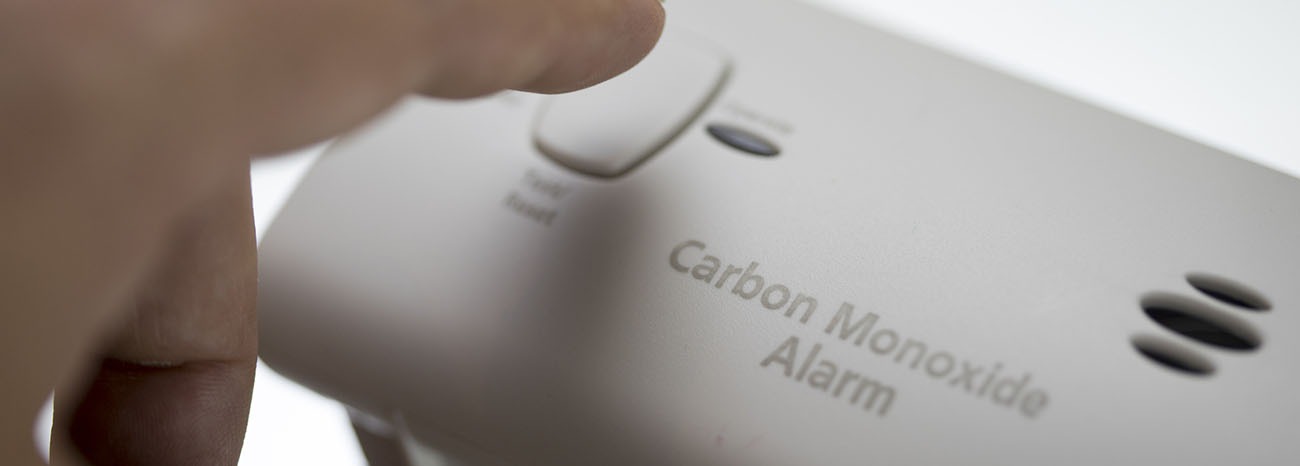Carbon monoxide (CO) is a dangerous gas that’s responsible for hundreds of deaths and thousands of hospital visits each year, with incidents often peaking during the colder months when heating systems are in regular use. This gas is often referred to as the “silent killer” due to its colorless, odorless, and tasteless nature, making it virtually undetectable without the aid of specialized detectors.
While gas-powered heating systems are the primary cause of an increase in carbon monoxide within the home, air conditioners can also spread this deadly gas if there is a leak in the system. This is why it’s important to understand the risks associated with carbon monoxide, particularly in relation to household heating and ventilation systems.
The importance of carbon monoxide safety cannot be overstated. Regular maintenance and proper use of these systems are key to preventing carbon monoxide buildup. By staying informed about the dangers of carbon monoxide and adopting proactive safety practices, individuals can significantly reduce the risk of carbon monoxide exposure and ensure a healthier, safer home environment.
Carbon Monoxide and Your Air Conditioner
Carbon monoxide interferes with the body’s ability to transport oxygen, leading to serious tissue damage, or even death if inhaled in large amounts. So it helps to understand how this gas can become a hazard in the household. Homes with HVAC systems and other fuel-burning appliances have an increased risk of carbon monoxide production if these systems are improperly installed, poorly maintained, or inadequately ventilated.
Common sources of carbon monoxide in homes include:
- Gas furnaces and boilers
- Gas stoves and ovens
- Fireplaces and wood stoves
- Gas water heaters
- Blocked flues and chimneys
- Running vehicles in attached garages
- Central air conditioning
The main way that your air conditioner can lead to carbon monoxide poisoning is due to a malfunctioning or an improperly installed central air conditioning system. Window air conditioning units that cool single rooms are less powerful and do not produce carbon monoxide gas, but they are not entirely off the hook if their output moves the gas more effectively throughout your home when there is a pre-existing carbon monoxide leak.
Carbon monoxide gas can build up if your central air conditioning system’s vents and flues are blocked. Take the time to schedule regular maintenance and inspections to make sure these systems are operating safely and efficiently.
Identifying Carbon Monoxide Exposure
Early detection of carbon monoxide exposure can be the difference between life and death. Since the symptoms often mimic the flu (without the fever) or food poisoning, identifying the issue as carbon monoxide poisoning can be difficult.
Be on the lookout for these common symptoms of carbon monoxide poisoning:
- Headache
- Dizziness
- Lapses in memory
- Nausea
- Shortness of breath
- Confusion
- Fatigue
- Loss of consciousness
Unfortunately, because these symptoms are so common carbon monoxide poisoning can easily be misdiagnosed.
Exposure to excessive carbon monoxide can lead to:
- Impaired oxygen delivery to the body’s organs and tissues
- Aggravation of existing heart conditions
- Severe health issues such as brain damage or death, particularly in enclosed spaces
A carbon monoxide leak that happens during the night is especially dangerous since you are less likely to realize what is happening while you are asleep. The good news is there are prevention and detection methods to protect you and your family.
Preventive Measures for Carbon Monoxide Safety
The first step is maintenance. Keep up with scheduled inspection and repair of your heating and air conditioning systems. Make sure your chimney is in good condition and working properly. Replace your filters regularly and keep your vents clear and clean.
Install carbon monoxide detectors throughout your home. It’s as simple as plugging the detector into an electrical outlet. These devices will alert you to the presence of carbon monoxide before exposure becomes dangerous. It is recommended to place the detectors near sleeping areas and on every floor of the home. Set reminders on your calendar or phone to periodically check whether the carbon monoxide detectors are active, working and have functioning batteries.
Proper ventilation throughout your home is just as important as a preventive measure. This includes using exhaust fans in the kitchen and bathrooms, keeping vents clear of debris and gunk and never using outdoor fuel-burning equipment indoors.
Finally, please take some time to educate all of your household members about the risks of carbon monoxide and the importance preventing carbon monoxide buildup.
Quick Carbon Monoxide Preventive Checklist:
- Professional Inspections: Schedule annual inspections of your HVAC system and other fuel-burning appliances by qualified professionals to detect potential carbon monoxide leaks.
- Carbon Monoxide Detectors: Install carbon monoxide detectors on every level of your home, especially near sleeping areas, to provide early warning of carbon monoxide presence. Regularly test and maintain them according to the manufacturer’s instructions.
- Ventilation: Ensure proper ventilation in rooms with fuel-burning appliances and never use outdoor equipment, like grills and generators, indoors.
- Check Appliances: Regularly inspect your home’s fuel-burning appliances, such as furnaces, boilers, water heaters, and stoves and make sure they are in good working condition and properly vented.
- Educate Everyone: Make sure all household members understand the risks of carbon monoxide and can recognize the symptoms of carbon monoxide poisoning.
Get Help from the Pros
Certified technicians can conduct thorough inspections and maintenance of your heating, ventilation, and air conditioning systems so that they are functioning correctly and not posing a risk for carbon monoxide leakage. These professionals are trained to identify potential hazards, such as cracks in a furnace’s heat exchanger or problems with the flue system, which could lead to dangerous carbon monoxide emissions.
During a professional HVAC inspection, technicians will check the integrity of the equipment, clean and replace filters, and verify whether all components are operating efficiently. They can also provide advice on carbon monoxide detectors and tips for appliance maintenance required in your home. These technicians are also up to date on the latest safety requirements and can offer recommendations or considerations to further safeguard your home. Regular maintenance visits, ideally before the winter months, can help prevent carbon monoxide buildup and other hazards. Trusting these critical tasks to professionals not only extends the life of your HVAC system but also protects your family’s health and well-being by preventing carbon monoxide poisoning.
By staying informed about the potential sources of carbon monoxide within the home, you are on your way to taking proactive steps to mitigate risks and safeguard your family and your home against carbon monoxide poisoning.
We are here to help. If you have any questions, give us a call at 215.799.2019 or visit emoyer.com.


